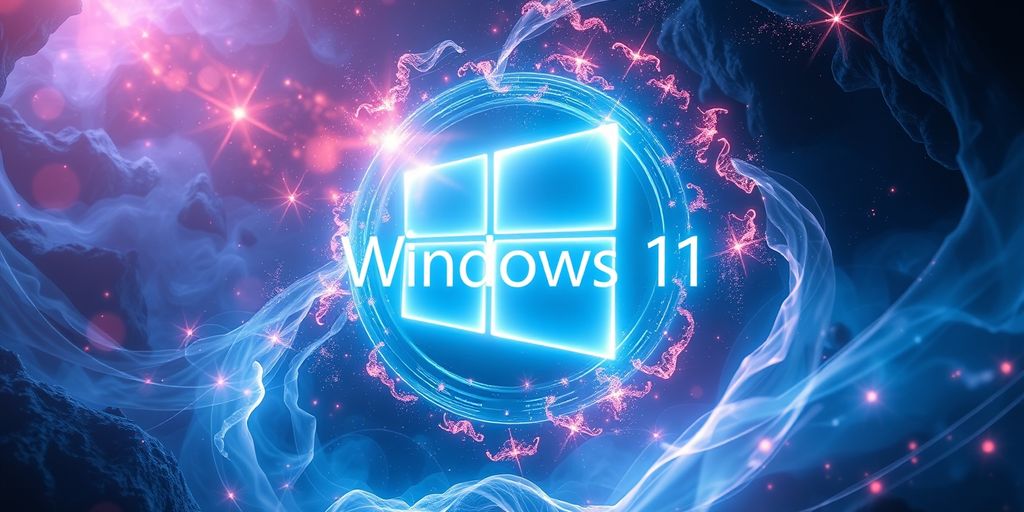Windows 11 is packed with new features and improvements, but it’s not without its issues. From slow performance to connectivity problems, users may encounter various hurdles. This guide will help you troubleshoot and fix some of the most common problems you might face with Windows 11.
Key Takeaways
- Restarting your computer can often solve many temporary issues with Windows 11.
- Clearing out extra storage space can improve your computer’s performance.
- Updating your drivers can fix compatibility issues and improve system stability.
- Using Windows 11’s built-in troubleshooters can help resolve many common problems automatically.
- Running a security scan can help identify and remove malware that might be causing issues.
Resolving Slow Performance Issues
Checking for Background Processes
One of the first things to check when your Windows 11 PC is running slow is the background processes. Background processes can consume a lot of system resources, making your computer sluggish. Here’s how to check and manage them:
- Press
Ctrl + Shift + Escto open the Task Manager. - Go to the
Processestab. - Look for processes that are using a lot of CPU, memory, or disk resources.
- Right-click on any resource-heavy process and select
End Taskif it’s not essential.
Optimizing Startup Programs
Too many startup programs can slow down your computer’s boot time and overall performance. To optimize startup programs:
- Open the Task Manager by pressing
Ctrl + Shift + Esc. - Navigate to the
Startuptab. - Review the list of programs that start when your computer boots up.
- Right-click on non-essential programs and select
Disable.
Updating Drivers
Outdated drivers can cause performance issues. Keeping your drivers up-to-date ensures that your hardware runs smoothly. Follow these steps to update your drivers:
- Press
Windows + Xand selectDevice Manager. - Expand the categories and look for any devices with a yellow exclamation mark.
- Right-click on the device and select
Update driver. - Choose
Search automatically for updated driver software.
Sometimes, a simple driver update can make a world of difference in your computer’s performance.
By following these steps, you can significantly improve your Windows 11 PC’s performance and enjoy a smoother computing experience.
Fixing Internet Connectivity Problems

Having trouble connecting to the internet or experiencing slow speeds? Here are some steps to help you get back online quickly.
Solving Printer Issues
Having trouble with your computer printers? Don’t worry, we’ve got you covered! Here are some simple steps to help you get your printer back up and running smoothly.
Checking Printer Connections
First things first, make sure your printer is properly connected. Check all the cables and ensure they are securely plugged in. If you’re using a wireless printer, verify that it’s connected to the same Wi-Fi network as your computer. Sometimes, just a quick reconnection can solve the problem.

Updating Printer Drivers
Outdated drivers can cause a lot of issues with computer printers. Head over to the printer manufacturer’s website and download the latest drivers for your model. Install them and restart your computer. This simple step can often fix many printer-related problems.
Using the Printer Troubleshooter
Windows 11 comes with a built-in Printer Troubleshooter that can automatically detect and fix common printer issues. To use it, go to Settings > Update & Security > Troubleshoot > Additional troubleshooters, and select Printer. Follow the on-screen instructions, and let Windows do the work for you.
If your printer is still not working, it might be time to consider professional help. Sometimes, the issue could be more complex and require expert attention.
By following these steps, you should be able to resolve most printer issues and get back to printing without any hassle.
Dealing with Display Problems
Adjusting Display Settings

If your screen doesn’t look right, the first thing to check is the display settings. Go to Settings > System > Display. Here, you can adjust the resolution and orientation. Make sure the resolution is set to the recommended level for your monitor. If you have multiple monitors, you can also arrange them correctly in this menu.
Updating Graphics Drivers
Outdated graphics drivers can cause all sorts of display issues. To update your drivers, open Device Manager by right-clicking the Start button and selecting it from the list. Find your graphics card under Display adapters, right-click it, and choose Update driver. Follow the prompts to search for and install any available updates.
Running the Display Troubleshooter
If adjusting settings and updating drivers don’t fix the problem, try running the built-in troubleshooter. Go to Settings > Update & Security > Troubleshoot. Select Display Quality and run the troubleshooter. This tool can automatically find and fix common display problems.
Sometimes, a simple restart can solve display issues. If all else fails, give your computer a quick reboot.
Remember, keeping your computer monitors and computer mouse drivers updated can prevent many common issues.
Managing Software Compatibility
Checking for Software Updates
One of the first steps in managing software compatibility issues is to ensure that all your applications are up-to-date. Outdated software can often cause compatibility problems with Windows 11. To check for updates:
- Open the application that is causing issues.
- Navigate to the ‘Help’ or ‘Settings’ menu.
- Look for an option like ‘Check for Updates’ and follow the prompts.
Running Compatibility Mode
If updating the software doesn’t resolve the issue, try running the application in compatibility mode. This feature allows older software to run using settings from a previous version of Windows. Here’s how to do it:
- Right-click on the application’s shortcut or executable file.
- Select ‘Properties’ from the context menu.
- Go to the ‘Compatibility’ tab.
- Check the box that says ‘Run this program in compatibility mode for:’ and select the desired Windows version from the dropdown menu.
- Click ‘Apply’ and then ‘OK’.
Using the Program Compatibility Troubleshooter
Windows 11 includes a built-in Program Compatibility Troubleshooter that can automatically detect and fix compatibility issues. To use this tool:
- Open the Start menu and type ‘Run programs made for previous versions of Windows’.
- Click on the result to open the Program Compatibility Troubleshooter.
- Follow the on-screen instructions to identify and fix any compatibility issues.
Managing software compatibility is crucial for a smooth computing experience, especially when using refurbished laptops or refurbished desktop computers. Keeping your software updated and utilizing built-in Windows tools can save you a lot of headaches.
Handling Windows Update Errors

Keeping Windows 11 up-to-date is crucial for security and performance, but sometimes updates can run into issues. Here’s how to tackle common Windows Update problems.
Running the Windows Update Troubleshooter
If you get an error code while updating, the first step is to run the Windows Update Troubleshooter. This tool can automatically find and fix many update issues. To use it:
- Go to Settings.
- Select Update & Security.
- Click on Troubleshoot and then Windows Update.
- Follow the on-screen instructions.
Clearing the Update Cache
Sometimes, the update cache can get corrupted and cause problems. Clearing it can help:
- Open Command Prompt as an administrator.
- Type the following commands one by one, pressing Enter after each:
net stop wuauservnet stop bitsren C:\Windows\SoftwareDistribution SoftwareDistribution.oldnet start wuauservnet start bits
- Restart your computer.
Manually Installing Updates
If automatic updates fail, you can manually download and install them:
- Visit the Microsoft Update Catalog.
- Search for the update using its KB number.
- Download the update file.
- Run the downloaded file to install the update.
Pro Tip: Always ensure your device has enough free space before starting an update. This can prevent many common issues.
By following these steps, you can keep your Windows 11 system running smoothly and securely.
Resolving Storage Space Problems
Cleaning Up Disk Space
Running out of storage can be a real headache, but there are simple ways to free up space. Start by using the Disk Cleanup tool. Just right-click on your C: drive, select ‘Properties,’ and then click on ‘Disk Cleanup.’ This tool helps you get rid of unnecessary files with just a few clicks.
Another quick tip is to empty your ‘Downloads’ folder and ‘Recycle Bin.’ These often hold files you no longer need.
Using Storage Sense
Windows 11 has a built-in feature called Storage Sense that can automatically free up space. To enable it, go to ‘Settings,’ then ‘System,’ and click on ‘Storage.’ Turn on Storage Sense, and it will automatically delete temporary files and manage your storage.
Expanding Storage Capacity
If you find that you still need more space, consider expanding your storage. You can add an external hard drive or upgrade your internal storage. External drives are easy to use and can provide a lot of extra space for your files and applications.
Pro Tip: Regularly check your storage settings to ensure you’re not running out of space. Keeping an eye on your storage can help you avoid unexpected issues.
Addressing Security and Privacy Concerns
Updating Security Settings
Keeping your security settings up-to-date is crucial for protecting your computer. Make sure Windows Defender and your firewall are enabled. Regularly check for updates to ensure you have the latest security patches.
Running a Security Scan
Running a security scan can help identify and remove malware or other threats. Use Windows Defender or another trusted antivirus program to perform a full system scan. It’s a good idea to schedule regular scans to keep your system safe.
Managing Privacy Settings
Windows 11 offers various privacy settings to control what information is shared. Go to the Privacy section in Settings to review and adjust these options. You can manage permissions for apps, control location settings, and limit data collection to enhance your privacy.
Taking a few minutes to adjust your security and privacy settings can make a big difference in keeping your information safe.
Troubleshooting Application Crashes

Checking for App Updates
One of the first steps to take when an application keeps crashing is to check for updates. Developers often release updates to fix bugs and improve performance. Make sure your app is running the latest version by visiting the app store or the developer’s website.
Reinstalling the Application
If updating doesn’t solve the problem, try reinstalling the application. This can fix corrupted files that might be causing the crashes. Follow these steps:
- Uninstall the application from your device.
- Restart your computer to clear any lingering issues.
- Download and install the latest version of the application.
Running the App Troubleshooter
Windows 11 includes a built-in troubleshooter specifically for applications. To use it:
- Open Settings and go to System.
- Click on Troubleshoot, then select Other troubleshooters.
- Find the troubleshooter for the specific app and click Run.
Running the troubleshooter can automatically detect and fix many common issues, saving you time and effort.
By following these steps, you can often resolve application crashes and get back to using your software without interruptions.
Putting It Together
Windows 11, like any operating system, can have its share of problems. But don’t worry! With the right tools and a bit of patience, most issues can be fixed quickly. Whether it’s a slow computer, a troublesome update, or a quirky app, there’s usually a solution at hand. Remember, restarting your PC can solve many problems, and the built-in troubleshooters are there to help with more stubborn issues. Keep your system updated, manage your storage, and don’t hesitate to seek help when needed. With these tips, you’ll keep your Windows 11 running smoothly and enjoy all the features it has to offer.
Frequently Asked Questions
What should I do if my Windows 11 computer is running slow?
First, check for background processes that might be using up resources. You can also optimize startup programs and make sure all your drivers are up to date.
How can I fix internet connection problems on Windows 11?
Try resetting your network settings, updating your network drivers, or using the Network Troubleshooter to find and fix issues.
Why is there no sound coming from my Windows 11 computer?
Check your audio settings to make sure everything is set up correctly. Updating your audio drivers and running the Audio Troubleshooter can also help.
What can I do if my printer is not working with Windows 11?
Ensure that all printer connections are secure, update your printer drivers, and try using the Printer Troubleshooter to resolve the issue.
How do I fix display problems on Windows 11?
Adjust your display settings, update your graphics drivers, and run the Display Troubleshooter to identify and fix any issues.
What steps can I take to resolve software compatibility issues on Windows 11?
Check for software updates, try running the program in Compatibility Mode, and use the Program Compatibility Troubleshooter to find and fix problems.
How can I fix Bluetooth connectivity issues on Windows 11?
Make sure Bluetooth is enabled, update your Bluetooth drivers, and use the Bluetooth Troubleshooter to resolve any connectivity problems.
What should I do if an application keeps crashing on Windows 11?
Check for updates for the app, try reinstalling it, and use the App Troubleshooter to find and fix issues causing the crashes.








